As its common name suggests, it looks like a nicely arranged curtain on dead, heavily decayed Oak stumps and trunks. It is as deep chocolate brown as its host/substrate, so it is not always easy to spot, unless if you know what are you looking for.
Home / Mushroom Guide /
Oak Curtain Crust
Oak Curtain Crust
| Mushroom Type | |
| Common Names |
Oak Curtain Crust, Crawen Derw (CY), Szczeciniak Rdzawy (PL), Rozsdás Sörtésréteggomba (HU) |
| Scientific Name |
Hymenochaete rubiginosa |
| Synonyms |
Stereum rubiginosum, Thelephora rubiginosa, Hymenochaete ferruginea, Stereum ferrugineum, Thelephora ferruginea |
| Season Start |
All |
| Season End |
All |
| Average Mushroom height (CM) | |
| Average Cap width (CM) |
1–4 |
Please note that each and every mushroom you come across may vary in appearance to these photos.
Fruiting Body
Perennial. Initially resupinate, then the upper part of the fruit body peels off and forms a small, shelf-like cap (this kind of fruitbody is called effused-reflexed).
Sterile (upper) surface: 1–4 cm across, could be 1–4 cm in depth. Finely covered with short, matt hairs (tomentose) or glabrous (lacking hairs), uneven, with a concentric ridges. Dark chocolate brown, reddish brown or blackish brown. Its edge is often rusty orange.
Fertile surface: concolorous with the sterile surface, uneven, warty or bumpy, but sometimes almost smooth entirely. There are no visible pores or gill or spines. Margin often orangish brown.
Habitat
Grows individually, or more often in large clusters of tiers on dead wood of Oaks (Quercus), occasionally and in warmer countries on Sweet Chestnut (Castanea sativa), but rarely on other hardwood substrates, such as Alder (Alnus), Birch (Betula), Beech (Fagus), etc. Even more rarely it was reported from some conifers, such as Fir (Abies), Spruce (Picea), Pine (Pinus). Saprotrophic, causes white pocket rot.
Possible Confusion
It only can be confused with other recent or former Hymenochaete species. Microscopy is often necessary for a solid, species-level ID if the host is neither Oak, nor Sweet Chestnut.
Hymenochaete carpatica has a strong preference for Sycamore (Acer pseudoplatanus), but the local findings were reported from other substrates, such as Beech (Fagus), Elm (Ulmus) and Gorse (Ulex europaeus).
Willow Glue (Hydnoporia tabacina, syn: Hymenochaete tabacina) prefers Willows (Salix), but can be found on other hardwood substrates as well.
Glue Crust (Hydnoporia corrugata, syn: Hymenochaete currugata) AKA Hazel Glue Crust, pictured, has a strong preference for Hazel (Corylus) and is almost always found on Hazel. However, rarely, but it can be found on other hardwood substrates as well.
Taste / Smell
Inedible. Taste and smell not distinctive.
Frequency
Common and widespread all over the UK.
Spores
Spore print white. Spores ellipsoid, curved, cylindrical, smooth, thin-walled, inamyloid (which proves there is no starch in the spore wall).
Other Facts
We don’t really know why the genus is called Hymenochaete. It might have been a reference of a long forgotten hairband, because in Greek, ‘hymen‘ means membrane, while ‘chaite‘ means long hair…
The epithet (2nd part of the scientific name) ‘rubiginosa‘ means rusty or rusty-coloured.


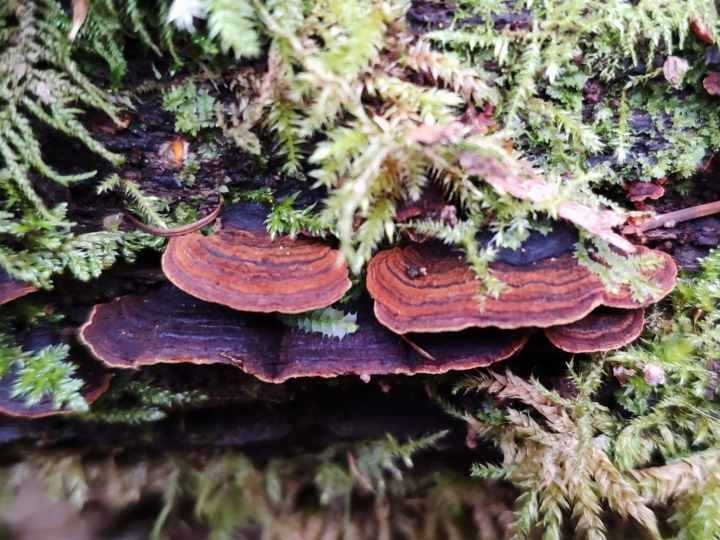
















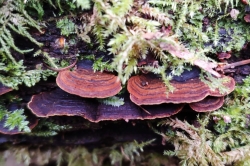
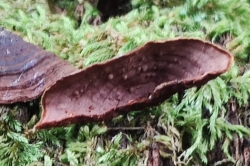
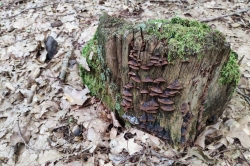
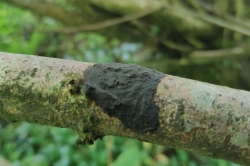
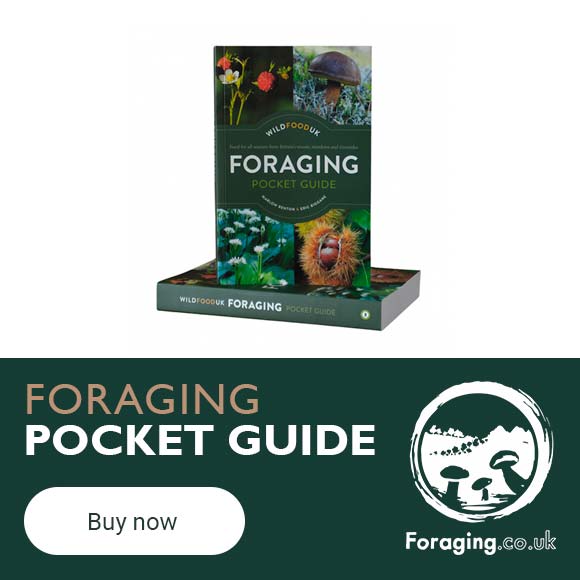
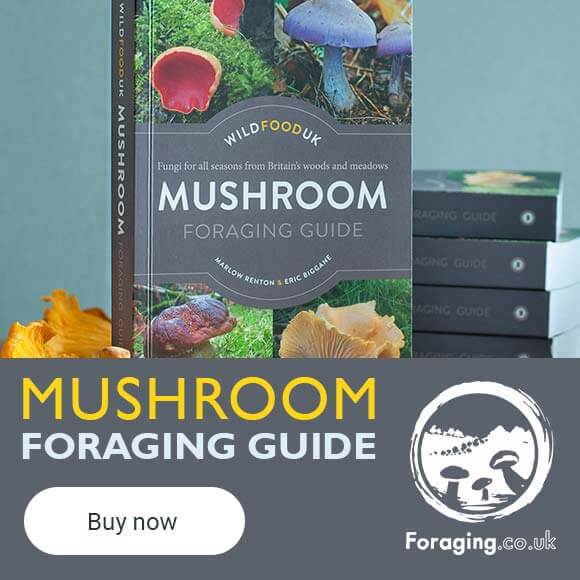
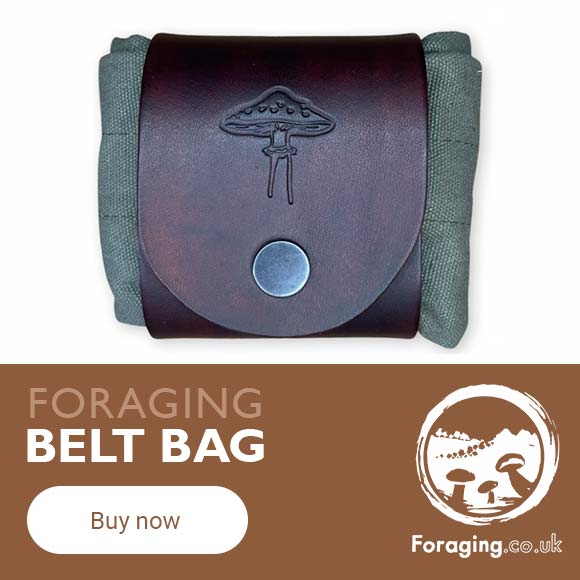
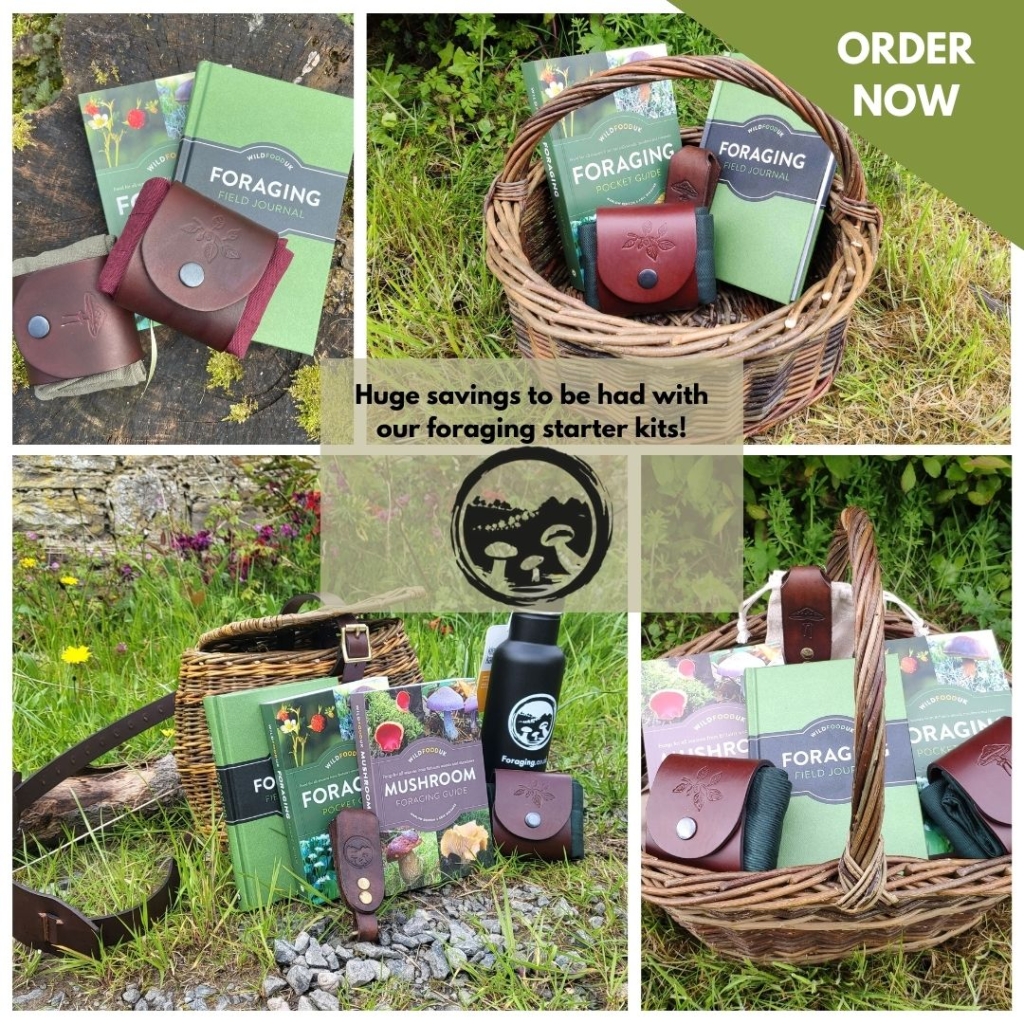


Leave a Reply